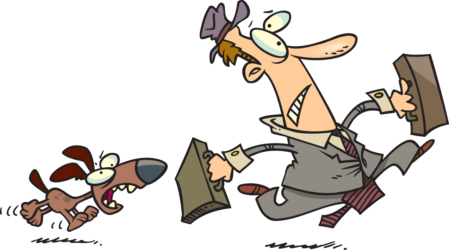Start Expand Discontinue Decisions

Example 1 Eliminate Operations
National Express
National Express, an international delivery service, is considering eliminating operations in Eastern Europe. If the company dropped the East European market, it would lose revenues of 1,000,000 annually. Management assigns costs of 1,200,000 (800,000 variable and 400,000 fixed) to the East European market. Therefore, the East European market has an apparent annual loss of 200,000 per year (1,000,000 revenue minus 1,200,000 costs). Careful cost analysis reveals that if East European operations were dropped, the reduction in costs would be only 800,000 of variable and 250,000 of fixed costs. The remaining 150,000 of fixed costs were general fixed costs the company allocated to the East European market. These costs would continue to be incurred and would not be saved by shutting down the East European market.
| Differential Analysis | Keep | Eliminate | Differential |
| Revenues | 1,000,000 | 0 | (1,000,000) |
| Variable Costs | 800,000 | 0 | 800,000 |
| Contribution margin | 200,000 | 0 | (200,000) |
Direct Fixed Costs | 250,000 | 0 | 250,000 |
| Allocated Fixed Costs | 150,000 | 150,000 | 0 |
| Total Fixed Costs | 400,000 | 150,000 | 250,000 |
| Profit (Loss) | (200,000) | (150,000) | 50,000 |
| Advantage close | 50,000 |
Elimination of the East European market is justified according to this analysis. By eliminating this market, National Express would reduce revenues by 1,000,000 and would reduce costs by 1,500,000 (800,000 + 250,000), resulting in a 50,000 benefit of closing the operations (or a 50,000 differential loss by keeping the operations open)
Example 2 Expanding Operations
Super Burgers
Super Burgers a top shelf burger chain is thinking about adding an additional restaurant at a new location. They plan on operating the restaurant for five years and require a 10% return.
They have gathered the following information which is presented below and in the table below:
Sales
6,000 burgers per month @ $10.00 $60,000 per month
8,000 drinks @ $2.00 $16,000 per month
4,000 fries @ $2.50 $10,000 per month
Variable expense
Direct materials
Burgers $5.00 $30,000 per month
Buns $1.00 $6,000 per month
Drinks $1.00 $8,000 per month
Fries.$50 x 4,000 $2,000 per month
Condiments .$50 x 6,000 $3,000 per month
Fixed Costs
Salaries & wages 20,000 per month
Fringe benefits @ 20% 4,000 per month
Rent $5,000 month
Utilities $1,500 per month
Insurance $1000 per month
Marketing $1,000 per month
Initial Investment
Working Capital
Minimum Cash $5,000
Inventories $20,000
Equipment: Cost of grills, fryers, refrigerators, point-of-sale (POS) system, etc. $100,000
Alternatives:
Open the burger restaurant.
Do not open the burger restaurant (baseline scenario).
| Contribution Margin Income Statement | Initial | Month | Year |
Sales | |||
| Burgers 6,000 @ $10 | $60,000 | $720,000 | |
| Drinks 8,000 @ $2.00 | 16,000 | 192,000 | |
| Fries 4,000 @ $2.50 | 10,000 | 120,000 | |
| Total sales | 86,000 | 1,032,000 | |
| Direct Materials | |||
| Burgers 6,000 @ $5.00 | 30,000 | 360,000 | |
| Buns 6,000 @ $1.00 | 6,000 | 72,000 | |
| Drinks 8,000 @ $1.00 | 8,000 | 96,000 | |
| Fries 4,000 @ $.50 | 2,000 | 24,000 | |
| Condiments 6,000 @ $.50 | 3,000 | 36,000 | |
| Total direct materials | 49,000 | 588,000 | |
| Contribution margin | $37,000 | $444,000 | |
| Fixed expenses | |||
| Salaries & wages | 20,000 | 240,000 | |
| Fringe benefits @ 20% | 4,000 | 48,000 | |
| Rent $5,000 / month | 5,000 | 60,000 | |
| Utilities | 1,500 | 18,000 | |
| Insurance | 1,000 | 12,000 | |
| Marketing | 1,000 | 12,000 | |
| Total fixed | 32,500 | 390,000 | |
| Profit | $4,500 | $54,000 | |
| Initial Investment | |||
| Working Capital | |||
| Minimum cash | 5,000 | ||
| Inventories | 15,000 | ||
| Total working capital | 20,000 | ||
| Equipment | 100,000 | ||
| Grills, fryers, refrigerators, point of sales, etc. | |||
| Total initial investment | 140,000 | ||
| Break even sales | $906,486 | ||
| Margin safety | $125,514 |
This decision is a no brainer ! Open the new restaurant.
Using Capital Budgeting and Discounted Cash Flow Analysis:
Net Present Value (NPV) : $64,702
Internal Rate of Return (IRR) : 26.8 %
Profitability Index (PI) : 1.46
Payback - 3 years

